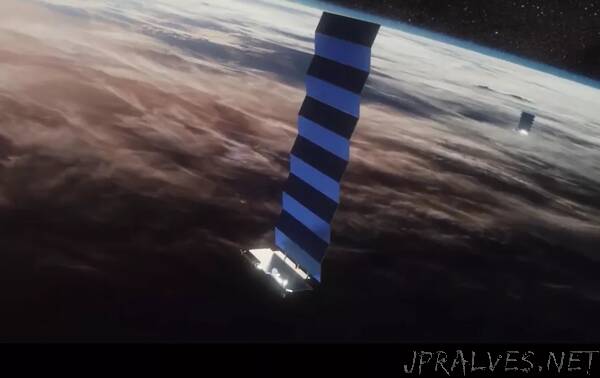
“Debris from Russia’s anti-satellite missile test last month has forced some SpaceX Starlink internet satellites to dodge in order to avoid in-orbit collisions, the company’s CEO Elon Musk said Tuesday (Nov. 30).
The Russian anti-satellite missile test, which shattered the defunct nearly 2-ton surveillance satellite Cosmos 1408 into thousands of pieces on Nov. 15, prompted indignation from the international space community. Companies and governmental organizations including NASA, the European Space Agency (ESA), and Earth-observation company Planet, issued statements condemning Russia’s act as irresponsible and malicious.
Until now, SpaceX, currently the biggest operator of satellites in the affected patch of space, remained silent.
Responding to a Twitter thread discussing NASA’s decision on Nov. 30 to cancel a planned spacewalk because of space debris risk, Musk admitted that his company’s satellites did come close to the Russian anti-satellite test (or ASAT) debris.
“We had to shift some Starlink satellite orbits to reduce [the] probability of collision,” Musk said in the tweet. “Not great, but not terrible either.”
Starlink satellites — there are currently more than 1,800 of them in orbit right now — circle Earth at the altitude of 340 miles (550 kilometers), about 50 miles (80 km) above the orbit of the destroyed Cosmos 1408 satellite.
Russia’s strike by ASAT missile did not just shatter Cosmos 1408, but sent debris fragments on various trajectories, some lower and some higher than the original orbit.
Experts estimate that operators flying satellites in the affected region will have to perform twice as many space debris avoidance maneuvers to keep their satellites safe.
“The workload will certainly increase,” Tim Flohrer, head of ESA’s space debris office, told Space.com shortly after the anti-satellite test. “In particular for everything up to the 600-kilometer [370 miles] orbit.”
According to many space sustainability experts, the Starlink constellation itself poses a risk to other operators. The satellites currently in orbit present only a small portion of what SpaceX ultimately envisions. The first generation of the constellation is meant to comprise 12,000 satellites, and the company has already applied for a permission to launch an additional 30,000. That is way more than have been launched in the more than 60 years since the first ever satellite Sputnik.
Starlink satellites are already involved in more than 50% of close encounters between two satellites in orbit, Hugh Lewis, the head of the Astronautics Research Group at the University of Southampton and Europe’s leading space debris expert, told Space.com in an earlier interview. This number will rise to 90% once all of the 12,000 satellites of the first-generation Starlink constellation are deployed, according to Lewis.
SpaceX relies on an autonomous collision avoidance system to keep its fleet away from other spacecraft and known pieces of space debris. This approach, however, is sometimes criticized by the company’s counterparts as it can introduce new uncertainties. The automatic orbital adjustments change the forecasted trajectory and therefore make collision predictions more complicated, according to Lewis.
“Starlink doesn’t publicize all the maneuvers that they’re making, but it is believed that they are making a lot of small corrections and adjustments all the time,” Lewis said at the time. “But that causes problems for everybody else because no one knows where the satellite is going to be and what it is going to do in the next few days.”
With the fallout of the Russian ASAT test, it seems there may be many more automated maneuvers by Starlink and with that, even more uncertainty for others.”
